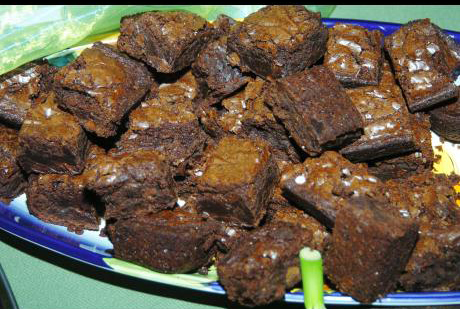Reported concerns in Jamaica that easy access to marijuana-laced snack foods could be putting the health of children at risk would appear to be doing nothing to stem that tide of commercialisation of the products, according to reports from the Caribbean Community member country.
A recent Jamaica Gleaner report states that stakeholders in the country’s western parish of St. James are concerned that the consumption of ‘ganja cookies’ among other popular marijuana-infused products could be drifting into the realm of becoming habit-forming among school children.
The Gleaner reports that school administrators in Jamaica have been less than open about reports of high-school students in St James becoming ill after ingesting ganja cookies though it says that several children with whom it has spoken have confirmed that the practice is becoming ever more popular. One report referred specifically to three boys who began to act strangely after eating the cookie and had to receive medical attention.
Recipes for the creation of ganja (marijuana) cookies, cakes and other marijuana-laced eatables are widely available on the internet and pot brownies, pot cookies, ganja gummies, weed chocolates and cannabis-infused beverages continue to gain consumer favour and arouse investor interest.
The Gleaner report alludes to a teacher at a St. James School who “had personally seen students consuming ganja cakes at schoolboy football matches.”
While medical research has long confirmed that marijuana contains some beneficial medicinal properties, the Gleaner reports a health official from the St. James parish as saying that marijuana consumption could impair learning, concentration, and language development.
Concerns over the increased consumption of marijuana edibles are reportedly linked to the commercial attraction associated with their ‘convenience’ compared to the less discreet option of smoking. In 2016, over US$180 million was reportedly spent on weed-infused food and drinks in California. In Washington State, edibles sales rose 121 per cent last year while in Colorado, marijuana edibles sales tripled between the first quarter of 2014 and the third quarter of 2016, soaring from US$17 million to US$53 million! The fact that marijuana edibles offer a discrete and smoke-free alternative to other methods of cannabis consumption has meant that they command much higher prices than alternative ganja products.
While the Jamaican authorities de-criminalized possession of two ounces or less of marijuana since 2015, that does not mean that fear of abuse has disappeared. The de-criminalisation decision has reportedly come with concerns expressed by the country’s National Council on Drug Abuse (NCDA) that the state is not doing enough to discourage ganja use among children.
Reports of drug use by schoolchildren in Guyana have not included reports of consumption of ganja-laced cookies though a senior teacher at an East Coast Demerara Secondary School told the Stabroek Business earlier this week that the copycat effect here of the reported popularisation of the ganja cookie craze in Jamaica cannot be ruled out. “Sooner or later someone might try to test the market among local school-children,” the teacher said. Asked about the wider challenge linked to the use of drugs among schoolchildren the teacher told this newspaper that she could say little on the issue of drug use in schools. “If the children choose to use drugs in or around the school environment, however, you do not get the impression that schools have enough safeguards.”
By contrast, information on the use of ganja among school-age children in Jamaica has reportedly led the NCDA Director to describe the current state of affairs as a free-for-all.
The Gleaner Report alludes to a NCDA 2016 National Household Survey study which it said “indicated that 10 per cent of 12- to 17-year-olds perceived that there was little or no risk associated with regular use of ganja” The report also said that fifty per cent of secondary-school-age children involved in the survey said that illegal drugs were sold in and around their school compounds. In October, the Gleaner reported that a random drug test of 25 students at a Manchester Boys Home revealed that only three were found to not have ganja in their system.
Earlier this week a local Education Ministry official conceded that the authorities have “little or no idea” of the extent of marijuana use, “or drug use on the whole, for that matter, among schoolchildren.” The official said that while, ideally, the authorities would want to say that local schools have a clean bill of health where the use of drugs is concerned, “unfortunately, we cannot make those claims because there are no systems in place to verify them.”
It is believed that when baked the THC (tetrahydrocannabinol) in the marijuana is activated and that this is the substance that creates the psychological effects that might require users to seek medical attention.






